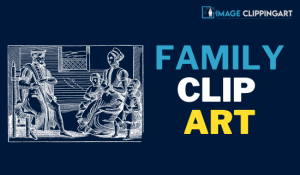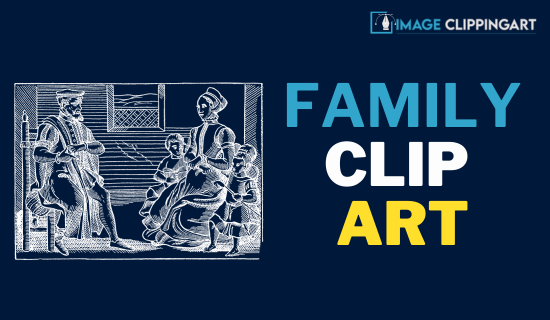In the vast and ever-evolving realm of digital design and visual communication, clip art has played a pivotal role for decades. Among the many genres and themes available, family clip art stands out as a heartwarming and versatile category that brings a sense of unity, love, and nostalgia to various creative projects. Whether you’re designing greeting cards, crafting a family album, or enhancing your classroom materials, family clip art has the power to infuse warmth and emotion into your work. In this comprehensive exploration, we will delve into the world of family clip art, discussing its origins, evolution, significance, and how you can utilize it effectively.
The Evolution of Family Clip Art
A Brief History
The concept of clip art dates back to the 19th century, when printed material often featured engraved illustrations that were painstakingly crafted by skilled artists. These illustrations were physically clipped or cut from printed publications and pasted into new documents, hence the term “clip art.” These early forms of clip art were far from the digital images we know today, but they served a similar purpose – adding visual appeal and context to written content.
As technology advanced, so did the world of clip art. The advent of the personal computer in the 1980s paved the way for the digitalization of clip art, making it easily accessible and editable. With the introduction of graphical user interfaces (GUIs) and desktop publishing software, clip art became an integral part of document creation, especially for individuals and small businesses.
The Emergence of Family Clip Art
Family clip art, in particular, gained popularity during the late 20th century as family-oriented content became increasingly important in various media. This genre of clip art encompasses a wide range of images depicting families in various scenarios, from casual gatherings to special occasions. It serves to evoke feelings of togetherness, love, and nostalgia – universal sentiments that resonate with people of all ages and backgrounds.
With the growth of the internet and digital design tools, family clip art saw a surge in popularity. Artists and designers began creating digital libraries of family-themed images, catering to the ever-growing demand for this heartwarming genre. Today, family clip art is widely available online, offering a diverse selection of styles, poses, and themes to suit any project.

The Significance of Family Clip Art
Capturing Emotion
Family clip art is not just a collection of images; it’s a visual language that conveys emotions and tells stories. Whether you’re designing a holiday card, a scrapbook page, or a presentation for a family event, the right family clip art can capture the essence of the moment – the joy of a reunion, the love between generations, or the playful interactions between siblings.
Versatility and Inclusivity
One of the strengths of family clip art lies in its versatility. It can be adapted to fit a wide range of purposes and audiences. It’s equally suitable for a child’s birthday invitation as it is for a corporate presentation on work-life balance. Additionally, family clip art can be inclusive, representing diverse family structures, cultures, and backgrounds, ensuring that everyone can find images that resonate with their own experiences.
Enhancing Communication
In an age where visual communication plays a crucial role in capturing people’s attention, family clip art can be a powerful tool for conveying messages effectively. It adds a personal touch to your content and helps create a connection with your audience. Whether you’re designing marketing materials or educational resources, family clip art can make your message more relatable and memorable.
Utilizing Family Clip Art Effectively
Now that we’ve explored the history and significance of family clip art, let’s discuss how you can use it effectively in your projects.
1. Choosing the Right Style
Family clip art comes in a variety of styles, from realistic to cartoonish, vintage to modern. When selecting clip art for your project, consider the overall aesthetic you want to achieve. Choose a style that complements your project’s tone and purpose. For instance, a playful and cartoonish style might be perfect for a children’s party invitation, while a more realistic style could be better suited for a family portrait.
2. Telling a Story
Every family has its own unique story, and family clip art can help you tell that story visually. Think about the narrative you want to convey through your project. Are you celebrating a milestone, reminiscing about cherished memories, or highlighting the bond between family members? Use clip art that aligns with your storytelling goals.
3. Customization
Don’t be afraid to customize family clip art to make it your own. Many digital design tools allow you to resize, recolor, and edit clip art to fit your project’s needs. Personalize the clip art to include family members’ names, add relevant captions, or incorporate specific details that are meaningful to your project.
4. Consistency
Maintain consistency in your project by using family clip art that complements each other in terms of style and color scheme. This consistency will create a cohesive and visually appealing result.
5. Respect Privacy
When using family clip art for personal projects, it’s essential to respect the privacy and consent of family members. Ensure that everyone is comfortable with their likeness being used in your designs, especially if the project will be shared publicly.
Where to Find Family Clip Art
The internet is teeming with resources for family clip art. Here are some popular sources where you can find high-quality images:
1. Stock Image Websites
Websites like Shutterstock, Adobe Stock, and Getty Images offer extensive libraries of family clip art that you can purchase and download for your projects.
2. Graphic Design Software
Many graphic design software programs, such as Adobe Illustrator and Canva, provide built-in libraries of clip art, including family-themed images.
3. Free Clip Art Websites
Several websites offer free clip art for personal and commercial use. Examples include Pixabay, Freepik, and Openclipart.org. Ensure that you review the usage terms and licensing agreements for each image you use.
4. Create Your Own
For those with artistic skills, consider creating your own family clip art. You can use digital illustration software like Adobe Illustrator or vectorize hand-drawn designs for a personal touch.
Conclusion
Family clip art is a versatile and emotionally resonant resource that can elevate your creative projects to new heights. Its evolution from print to digital, its significance in conveying emotion and inclusivity, and its wide range of applications make it a valuable tool in the world of visual communication.
As you embark on your next design endeavor, remember to choose the right style, tell a compelling story, customize clip art to suit your needs, maintain consistency, and always respect the privacy and consent of those featured in your projects. With these considerations in mind, you can harness the power of family clip art to create meaningful and visually captivating content that celebrates the beauty of family life. Whether you’re designing for personal or professional purposes, family clip art will continue to add warmth and whimsy to your projects for years to come.







